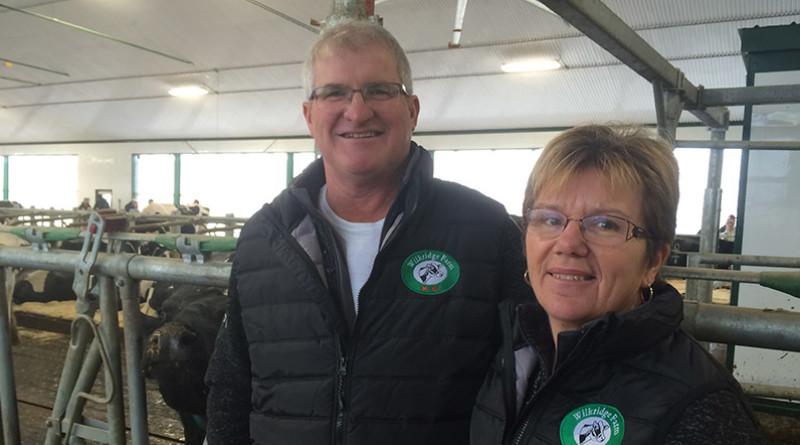 Wilkridge Farm near Fournier is one of the first dairy operations in Eastern Ontario to install GEA robotic milkers and on a Saturday recently, the farm opened its barn doors to more than 900 people.
Wilkridge Farm near Fournier is one of the first dairy operations in Eastern Ontario to install GEA robotic milkers and on a Saturday recently, the farm opened its barn doors to more than 900 people.
Husband and wife team, Ken and Peggy Wilkes are the owners and operators of the dairy operation that includes between 72 and 80 milking Holsteins and 850 acres of owned and rented cropland.
“We needed to increase barn space for the cows and decided that if we were going to build a new barn, we might as well go all the way with the robots,” says Ken Wilkes of the decision the couple made in May.
“It’s been challenging, but when we made the decision, we went all the way.”
The Wilkes are fifth-generation farmers on the property they bought from Ken’s father, Orville, in 1992. The farm was started in 1856. The couple wanted to make sure there was a well-run farm to pass on to the next generation even if it might not stay in the Wilkes family.
Now, both at age 54, the couple’s three children are actively pursuing careers off the farm; one is an agronomist/researcher for canola with Bayer Canada in Saskatoon, one is a social worker in Edmonton and their son is studying civil engineering at Carleton University.
The new $2.3-million barn measures 75 ft by 289 ft and contains two GEA Monobox robotic milkers, a new milkhouse and an office; a new cement manure lagoon was built outdoors.
“We went with the GEA system,” states Matthews, “because the service supplied by Lawrence’s Dairy Supply was fantastic.”
The previous barn was a tie stall facility built in 1979 and about half the size at 38 ft by 140 ft. It had become too physically demanding using a DeLaval tracking system and was at full capacity. Both Ken and Peggy felt it was time for a change and they were sure they wanted to leave a well-run farm for future farmers.
As with many dairy barn changes, it was challenging at first getting cows adjusted to their new domain.
The cows were averaging 41 kilos of milk in the old barn, but production slowed down to 33 kilos in the new free-stall barn. That number is steadily rising, as the cows get accustomed to their new home.
“It was physically, mentally and emotionally draining when we first made the change and probably the hardest thing I’ve done in my life. But it’s working well now. It was a good decision,” said Ken.
The benefits of the new barn and milking system are many, he explained. The milking pit allows workers to check cows for any physical concerns, such as sore or cut teats.
The new pasture mat with 1.5 inches of foam and wood shavings is, in his mind, the best bedding. The reaction of the crowd on Saturday was testament to that as many commented on the cleanliness of the facility and the cows.
There are five fans and Ventec automated curtains with weather sensors which close and open depending on windy or rainy weather conditions.
There are six video cameras in the barn that allow the Wilkes to monitor the cattle even while when they’re away.
“It’s been a great decision to expand and go with the robots because we don’t have to move the cows around so much and we have the capacity to increase. ” states Wilkes. “But the best thing is that it’s physically less demanding and it keeps us on top of the latest technology in the dairy business.”
Source: The Review









